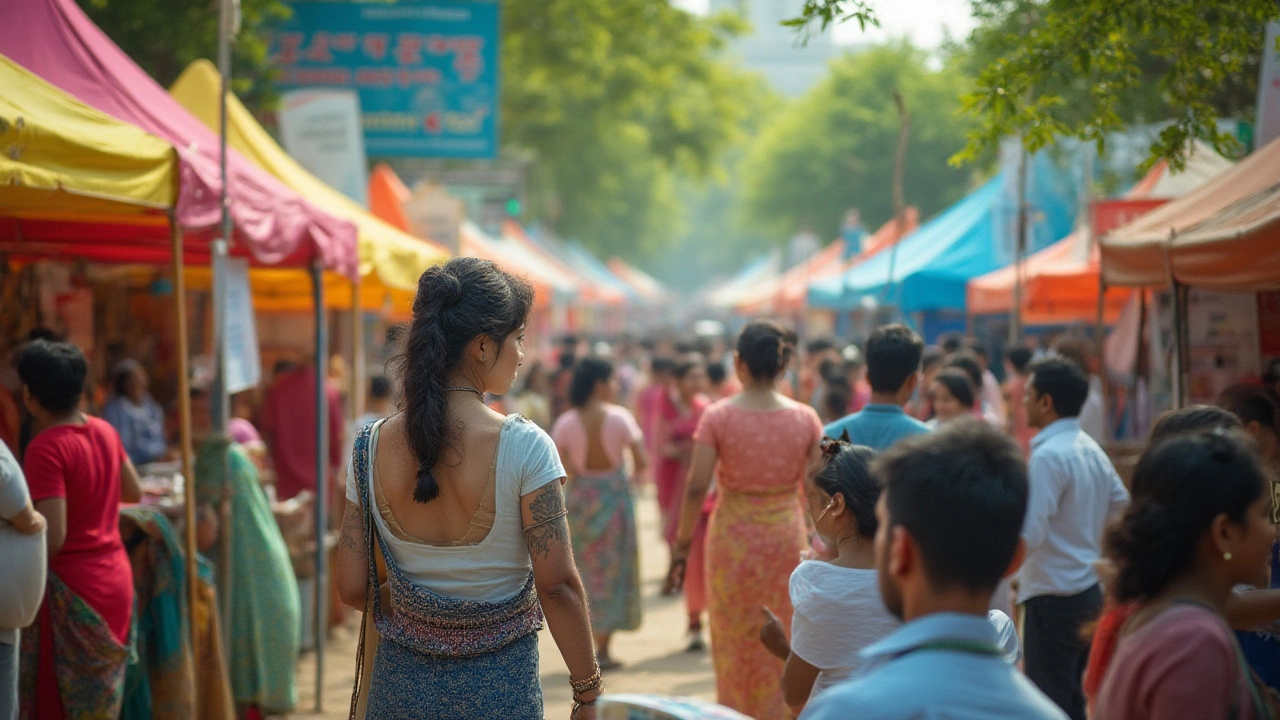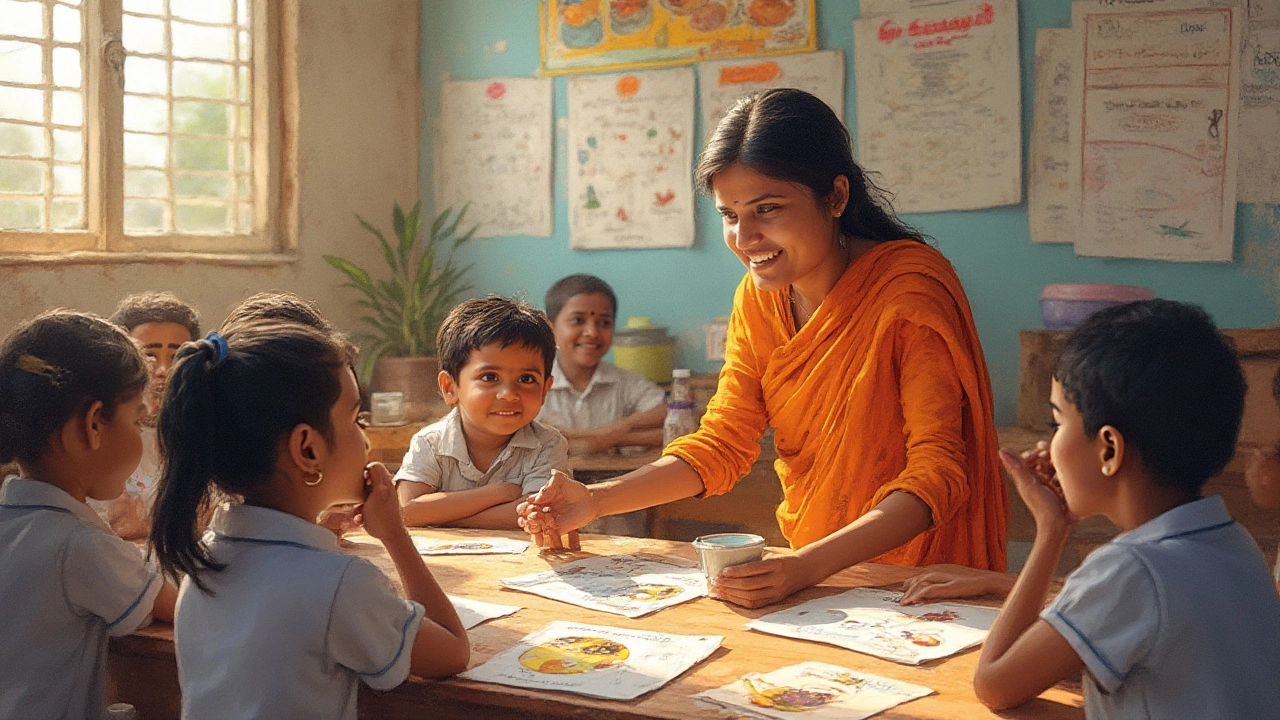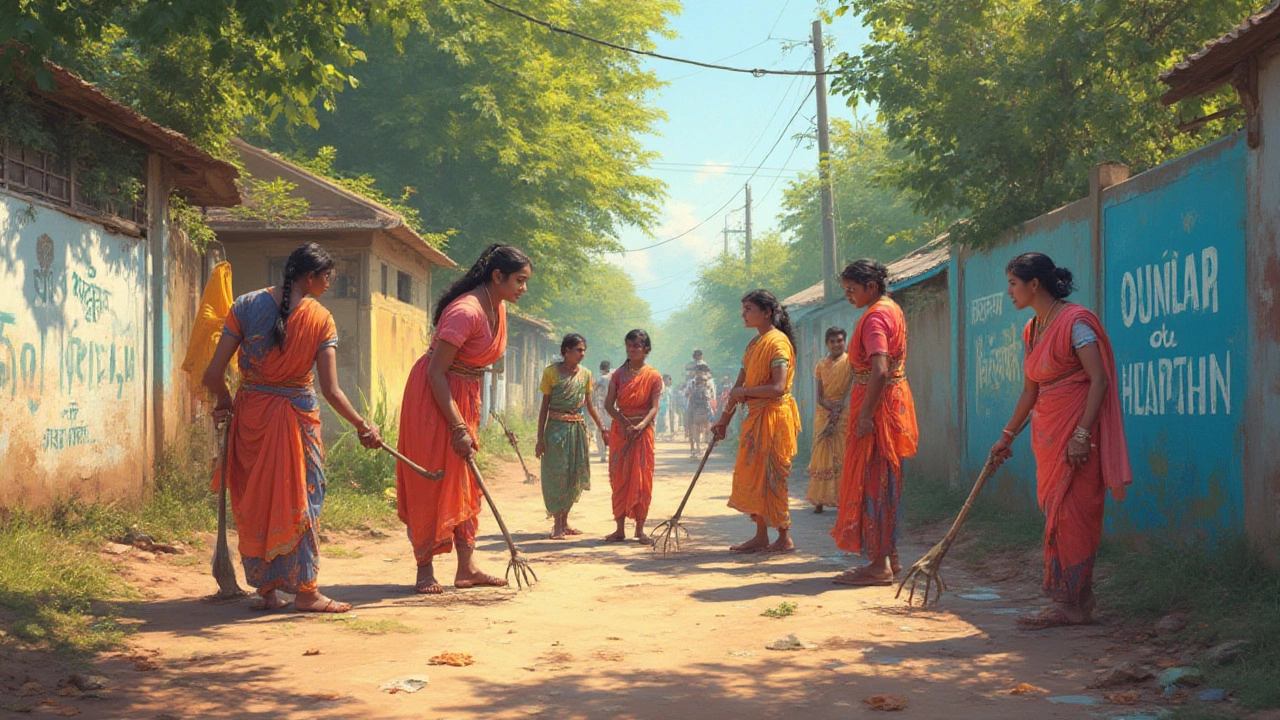Best Examples of Public Health Promotion: Real-World Strategies That Work
 Jul, 28 2025
Jul, 28 2025
Imagine a community where you walk down the street, and you don’t see a single person puffing away on cigarettes in public. Soda machines in schools disappeared ages ago, replaced by water fountains. Posters on every corner remind folks to get moving and to eat fresh. These aren’t just random acts—they’re all part of something much bigger. Public health promotion isn’t about short-lived fads or feel-good slogans. It’s a force that shapes how and why whole populations get healthier. Versions of this play out quietly (and sometimes loudly) in every country. But what scenario truly nails what public health promotion is supposed to be?
Understanding Public Health Promotion: What Sets It Apart?
Public health promotion isn’t just about telling people what’s good for them. It goes way beyond catchy ads about quitting smoking or eating green veggies. The goal: empower whole groups—not just individuals—to adopt healthy habits and live longer, stronger lives. Public health promotion is all about creating environments where the right choices are the easy choices. Sounds simple, but it takes strategy, science, and tons of effort. Here’s the kicker: It focuses heavily on prevention rather than only treating sickness once people are already unwell.
What really sets public health promotion apart is how it brings together schools, hospitals, government, businesses, and the people themselves. Unlike traditional healthcare, which is often a private affair between doctor and patient, public health works in the open—parks, schools, social media, you name it. The World Health Organization spells it out with their Ottawa Charter: the aim is to give communities the information, tools, and motivation to take charge of their health. Whenever you see seat belt laws, tobacco taxes, vaccine drives, or those pesky calorie numbers on fast food menus, you’re seeing public health promotion in action.
But it isn’t just about rules and regulations. It’s about making good health feel normal—celebrated, even. One clever example comes from Finland. In the 1970s, Finnish men had the world’s highest rates of heart disease. Public health experts, schools, and farmers teamed up to cut salt and saturated fat from the food supply and encouraged everyone to get outside and move. By 2011, men’s death rates from heart disease had plunged by more than 80%. No miracle cure, just smart health promotion.
Does it always involve governments? No. Grassroots groups, local nonprofits, and even companies make a huge difference. Maya, my wife, works with a group that runs free yoga mornings in local parks. The result? Better mental health, real friendships, and less stress for everyone. The secret: it’s about shaping options, habits, even social norms. Big or small, public health promotion programs aim to tip the balance so healthy living is the path of least resistance.
Ever noticed how school cafeterias slowly swapped out french fries for baked sweet potato? Or spot a park that suddenly got a walking trail and some outdoor gym gear? Behind every little nudge is a cascade of decisions built on data, community input, and creative thinking. It’s not always eye-catching or dramatic, but it works—slow and steady, shaping the health of entire towns and cities.

The Best Example: Vaccination Campaigns in Action
If you’re picking one example that stands head and shoulders above the rest, it’s hard to top vaccination campaigns. These efforts have saved more lives in the past century than almost any other intervention. Think about this: according to the Centers for Disease Control and Prevention (CDC), childhood vaccines are estimated to prevent around 4 million deaths each year, worldwide. When smallpox was killing millions, a focused global vaccination campaign wiped it off the face of the earth. That’s right—zero smallpox cases in the world since 1980, thanks to public health promotion at its peak.
Vaccination drives pull out all the stops. It’s not just doctors and nurses giving shots; it’s mass media explaining the importance, schools offering clinics, religious leaders reassuring worried families, and local governments tracking progress with digital dashboards. Remember the COVID-19 pandemic? In the first year of vaccine rollout, more than 2.7 billion questions were answered online about side effects, safety, and how to book appointments. Billboards, bus ads, memes, and even TikTok videos flooded in—everyone pitching in to help.
Here’s what makes vaccination campaigns an ideal showcase for public health promotion:
- Reach: Campaigns target entire populations, not just those who show up in clinics.
- Education: Clear, honest messages about safety and risk build trust. Take India’s polio campaign: it recruited Bollywood stars to talk about the vaccine on radio, TV, and even at wrestling matches.
- Equity: Mobile clinics bring shots directly into villages, slums, and remote areas.
- Policy backup: Countries often make school entry conditional on up-to-date vaccines. This isn’t just a stick; it’s a safety net for everyone.
- Measurable results: The rise in vaccine coverage shows up in hard data. The Americas wiped out measles for many years before small declines in immunization rates brought it back in pockets—an instant reminder about staying vigilant.
Let’s break down how this looks in practice, using a simple table:
| Country | Disease Targeted | Years Active | Impact |
|---|---|---|---|
| India | Polio | 1995-2014 | Full nationwide eradication; last case in 2011 |
| United States | Measles | 1963-present | Cases down by 99% since start; intermittent resurgences if vaccine rates drop |
| Africa (various countries) | Meningitis | 2010-2023 | Vaccine introduction in 26 countries cut cases by 89% in under five years |
You can’t fake results like these. Vaccine campaigns depend on more than just medicine; it’s communication, logistics, policy, and raw people power. Real public health promotion is a mix of boots-on-the-ground action and strategic nudges to move a whole society forward.

How Everyday Health Promotion Shapes Our Lives
While vaccine drives are the heavy hitters, public health promotion happens in all sorts of ways you might not even notice—at least not at first. That’s the beauty of it: gentle nudges in the right direction that add up to a tidal wave of good health over decades. Here are a few strategies that communities actually use:
- Health Education in Schools: Childhood is when habits stick. Schools that teach kids about nutrition, mental health, sexuality, and fitness plant seeds for life. Some research from Harvard showed that school-based anti-smoking lessons cut teen smoking rates by almost 30% in just a few years. The trick? Making it interactive and honest, not preachy or boring.
- Healthy Food Access: Have you heard of ‘food deserts’? These are neighborhoods where it’s hard to find fresh fruits and veggies. Cities like Philadelphia tackled this by offering tax breaks to shopkeepers who stocked healthy staples. The result: convenience stores with apples and yogurt instead of just chips and soda. When healthy food is convenient and affordable, more people reach for it.
- Physical Activity Campaigns: It’s not enough to say “move more.” Cities like Copenhagen redesigned streets, set up safe bike lanes, and made parks more attractive. More than 60% of Copenhagen’s residents now commute by bike—not to save the planet, but because it’s quick, fun, and totally normal. Maya and I visited last year, and I couldn’t count the number of parents pedaling their kids to school in little bike wagons. That’s public health in action.
- Sugar Tax Policies: In places like Mexico and the UK, researchers saw that a tax on sugary drinks led to a real dip in soda sales within the first year, with an uptick in sales of bottled water. These “sin taxes” nudge manufacturers and consumers in healthier directions without outright bans or finger-wagging.
- Smoke-Free Environments: Do you remember walking into restaurants filled with cigarette smoke? In many countries, it feels like a bad dream now. Government bans, paired with persistent education campaigns and help for people to quit, have made smoking far less visible—and far less tempting, too. Countries that passed indoor smoking bans saw drops in hospital admissions for heart attacks within months.
Maybe you’ve noticed sharable health tips on your social feed, or your company started mental health days. Wellness promotion takes many forms—sometimes loud and proud, other times subtle or even invisible.
One clever approach I've seen works like this: Community health workers, who actually come from the neighborhoods they serve, visit families at home to answer questions, distribute resources, and offer personal encouragement. This trust-based, face-to-face outreach is much more effective than official mailers or TV ads, especially in communities with strong local ties. A 2022 study in Kenya found that these visits raised vaccination rates by 12% compared to areas without them.
There are plenty of things you can start doing today, too, even on a personal scale. Organize a clean-up day for your local park. Help neighbors set up a community garden. Offer to run a fitness or cooking club at your child’s school. Public health promotion gets turbocharged when it starts from the ground up. And don’t forget the small nudges—posting helpful health reminders in your group chat, or asking if your workplace can organize free flu shots.
While vaccines grab headlines, the tastiest wins often come from small, sustained changes made by everyday people. When the right mix of community, policy, and passion comes together, public health promotion turns into something mighty. It’s about making the healthy choice feel easy, obvious, and—dare I say—kind of fun.
So, next time you hear the phrase “public health promotion,” think beyond the usual posters and health days. The real magic happens when smart strategies, honest conversations, and small, meaningful tweaks come together and reshape how a whole community lives, eats, plays, and thrives.